
Back
Ficus fistulosa Reinw. ex Blume
| Family Name: | Moraceae |
| Common Name: | Common Yellow Stem-Fig, Ara Serapat, Kelampung Bukit, 黄柄榕, 牛乳树 |
Name
Classifications and Characteristics
| Plant Division | Angiosperms (Flowering Seed Plants) (Dicotyledon) |
|---|---|
| Plant Growth Form | Tree (Medium (16m-30m)) |
| Lifespan (in Singapore) | Perennial |
| Mode of Nutrition | Autotrophic |
| Plant Shape | Irregular |
| Maximum Height | 18 m |
Biogeography
| Native Distribution | Northeast India, Nicobar Islands to south China, Taiwan, Thailand, Sumatra, Peninsular Malaysia, Singapore, the Philippines, Borneo, and Java to New Guinea |
|---|---|
| Native Habitat | Terrestrial (Primary Rainforest, Mountain, Secondary Rainforest, Freshwater Swamp Forest, Riverine, Disturbed Area / Open Ground) |
| Preferred Climate Zone | Tropical, Sub-Tropical / Monsoonal |
| Local Conservation Status | Native to Singapore (Least Concern (LC)) |
Description and Ethnobotany
| Growth Form | It is a tree reaching up to 18 m tall, containing white latex, with hollow young twigs, and figs borne on its trunk. |
|---|---|
| Foliage | Its spirally arranged, stalked leaves have somewhat leathery leaf blades that are oval to drop-shaped, dark green, 4–34 by 1.5–17 cm, and with lightly toothed or wavy margins |
| Flowers | The plant is dioecious with each plant bearing male or female flowers. The flowers are tiny and develop within the syconium (fig). |
| Fruit | Its syconia (figs) are found in clusters at the leaf-axils or on trunks and branches, and are somewhat round to pear-shaped, slightly rough on the surface, green with white dots then pale to greenish yellow when mature, and 1–4 cm wide. |
| Habitat | It grows in lowlands to lower montane forests, including secondary forests, forest edges, hedges, open forests, and along streams, up to 2,000 m altitude. It occurs locally from various forest fragments, such as those around MacRitchie Reservoir, off Sime Road, and Old Upper Thomson Road. |
| Associated Fauna | The fig wasps associated with this plant species are Ceratosolen constrictus, and Ceratosolen hewitti. The clusters of figs along the trunk attract arboreal mammals, including fruit bats. |
| Cultivation | The plant can be propagated by seed or by stem cuttings. |
| Etymology | Latin Ficus, the commercial edible fig (Ficus carica); Latin fistulosa, hollow throughout, referring to the hollow twigs of the fig tree |
| Ethnobotanical Uses | Edible Plant Parts : Edible Fruits, Edible Leaves Food (Fruit or Vegetable): Its young leaves and syconia are eaten in salads. A drink can be made from the leaves. Medicinal: A decoction of the roots is given to women after labour or child birth. Its latex is used with other herbs as a poultice to treat headaches. |
Landscaping Features
| Landscaping | This plant has no destructive roots that damage urban ground, and therefore, make an attractive park or roadside tree. Its figs provide food for fruit-eating bats and tree-living mammals such as squirrels. |
|---|---|
| Desirable Plant Features | Ornamental Foliage, Ornamental Fruits, Ornamental Form |
| Landscape Uses | Suitable for Roadsides, General, Parks & Gardens, Shade Providing Tree / Palm |
Fauna, Pollination and Dispersal
| Fauna Pollination Dispersal Associated Fauna | Bat Food |
|---|---|
| Pollination Method(s) | Biotic (Fauna) |
| Seed or Spore Dispersal | Biotic (Fauna) |
Plant Care and Propagation
| Light Preference | Full Sun |
|---|---|
| Water Preference | Moderate Water, Lots of Water |
| Plant Growth Rate | Moderate |
| Rootzone Tolerance | Drought Tolerant, Moist Soils, Waterlogged Soils (Drains Site), Fertile Loamy Soils |
| Maintenance Requirements | Moderate |
| Propagation Method | Seed, Stem Cutting |
Foliar
| Foliage Retention | Evergreen |
|---|---|
| Mature Foliage Colour(s) | Green |
| Mature Foliage Texture(s) | Leathery |
| Foliar Type | Simple / Unifoliate |
| Foliar Arrangement Along Stem | Alternate, Spiral |
| Foliar Attachment to Stem | Petiolate |
| Foliar Shape(s) | Non-Palm Foliage (Obovate, Oval) |
| Foliar Venation | Pinnate / Net |
| Foliar Margin | Entire - Wavy / Undulate, Serrate / Toothed |
Floral (Angiosperm)
| Flower & Plant Sexuality | Unisexual Flowers , Dioecious |
| Flower Grouping | Cluster / Inflorescence |
|---|
| Flower Location | Cauliflorous |
| Inflorescence Type | Syconium |
Fruit, Seed and Spore
| Mature Fruit Colour(s) | Green - Light Green |
|---|---|
| Fruit Classification | Multiple Fruit |
| Fruit Type | Fleshy Fruit , Accessory / False Fruit (Pseudocarp) |
Image Repository
Others
| Master ID | 29872 |
|---|---|
| Species ID | 4181 |
| Flora Disclaimer | The information in this website has been compiled from reliable sources, such as reference works on medicinal plants. It is not a substitute for medical advice or treatment and NParks does not purport to provide any medical advice. Readers should always consult his/her physician before using or consuming a plant for medicinal purposes. |

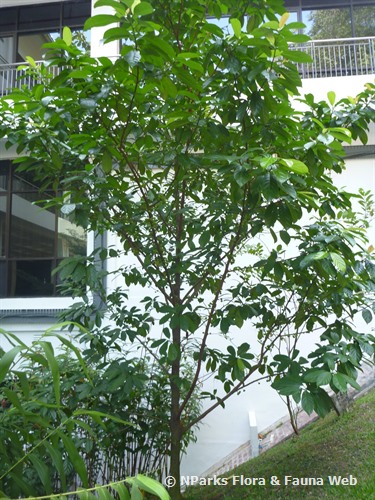
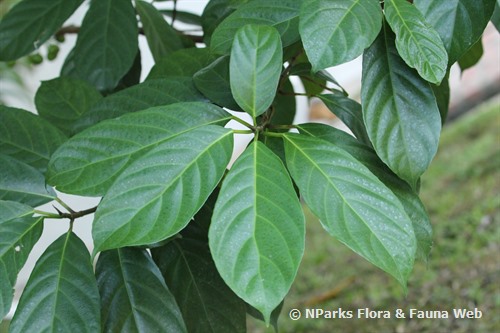

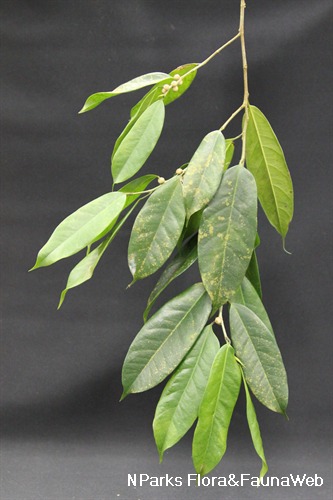
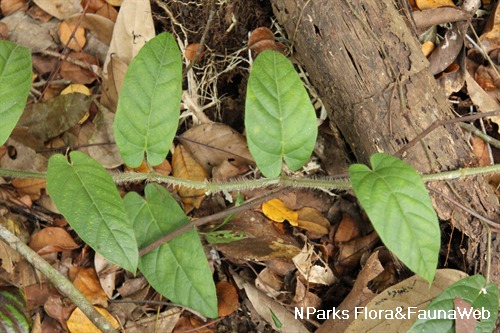
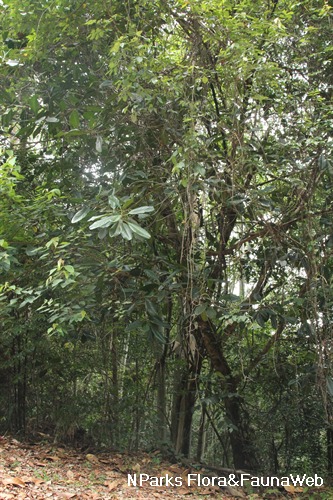
.jpg)